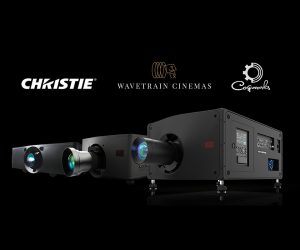CUSTOMERS IN THE AV INDUSTRY
Introducing the huge range of customer types served by the AV industry
This article is an excerpt from InfoComm University’s online course, GEN101 Quickstart to the AV Industry. This class is free to all InfoComm members. Please note that the online class is interactive and contains several videos relating to the material below.
A huge variety of professional AV applications are all around us and are used by many types of organisations – our customers. Successful AV professionals understand how the AV industry serves its customers, and their own customer service responsibilities.
VERTICAL MARKETS
Many AV dealers target particular vertical markets. A vertical market is a group of similar businesses or customers. In the AV industry, vertical markets are groups of potential customers with similar communication needs or business requirements.
Museums are one example of a vertical market. One museum may differ greatly from another – a sports hall of fame versus a museum of natural history, for instance – but they will still have similar AV needs. For instance, hundreds of people of all ages visit a museum each day so any touch screens must be tough and easy to use. Most museums showcase some temporary exhibits so they may need digital signage to show visitors what is on display.
Government facilities are another example of a vertical market. They often have specific, rigid requirements for network security and physical access. Whether a facility’s main function is intelligence, defence, or scientific research, it will want to work with AV dealers who have experience in meeting those regulations. AV dealers must also understand the complex paperwork and proper wording needed to get publicly funded jobs.
Targeting a specific vertical market can be very profitable for an AV dealer. When AV professionals work on a complex, long-term project, they invest a lot of time and money in understanding the client’s organisation. As a result, they learn about their client’s business market. The experience and knowledge gained from learning about a specific market helps AV professionals target other potential clients in that industry.
SCENARIO
For the past year, Acme AV has been installing interactive touchscreen displays in the Capitol City Children’s Museum. In the process, Acme AV’s staff have learned a lot about the communication priorities of museums such as making sure information is accessible and engaging. They have also learned about common concerns such as making sure the installation of AV systems won’t damage the museum’s famous building or any of the exhibits. They have even learned about business requirements specific to the museum market such as the budget approval process for non-profit organisations.
Now Acme AV can use this project to show other museums that it understands their communication needs, concerns, and business requirements. The Capitol City Children’s Museum will show off its new systems, causing other museums to consider investing in similar technology. Acme AV is in a position to get a lot of new business.
ASK YOUR PEERS
Does your organisation target any vertical markets? Who are your main customers, and what are the similarities between them? Start learning about the vertical markets your company serves so you can serve your customers better.
ALLIED TRADES
All AV professionals must work with people from outside their organisation in order to serve their customers’ needs. In this lesson you will learn what an allied trade is, and which allied trades you can expect to work with in the AV industry.
Allied trades are the businesses which collaborate with AV professionals to complete a project. Each trade has its own priorities and areas of expertise but they must all work together to satisfy the customer.
This table displays some of the AV industry’s allied trades and the areas where they might collaborate with AV professionals.
Allied Trade: Collaborate with AV Pros on…
Architects: Window placement in display environments; space requirements
Interior designers: Furniture; equipment positioning; wall and window treatments
Electrical professionals: Wiring installation; power requirements
IT professionals: Network connectivity; media storage; equipment control
Telecom professionals: Telephone systems; intercoms; internet lines
Heating, Ventilation, and Air
Conditioning (HVAC) professionals: Equipment mounting; HVAC noise
Content developers: Digital signage content
Subject matter experts: Topics specific to a particular project or vertical market. For example, a teacher might advise an AV professional on the requirements for a classroom.
This list is not exhaustive. A more complex or unusual AV project might involve even more allied trades. For any project, working well with allied trades is the key to success.
CUSTOMER SERVICE
No matter what your role in the AV industry is, you are in a customer service position. This is true whether or not you have direct contact with end users.
Similarly, the term ‘customer’ can apply to more than the people who pay for your organisation’s services. Your allied trades and co-workers are also customers.
Good customer service is always important. Here are some examples of why this is true:
When you provide excellent customer service to clients by learning about their industries, you help create business opportunities for your company.
When you serve allied trades with reliability and professionalism, you help projects run smoothly and generate positive word of mouth.
When you serve your co-workers with respect and attentiveness, you advance your own career.
Steps you can take to help your organisation deliver good customer service include:
Making sure you fully understand your organisation’s individual customer service policies. Read any written policies, and talk to you supervisor and co-workers about what is expected of you when interacting with clients.
Familiarising yourself with the services and technologies your company offers. The ability to provide accurate answers to clients’ questions is a big part of customer service.















RESPONSES